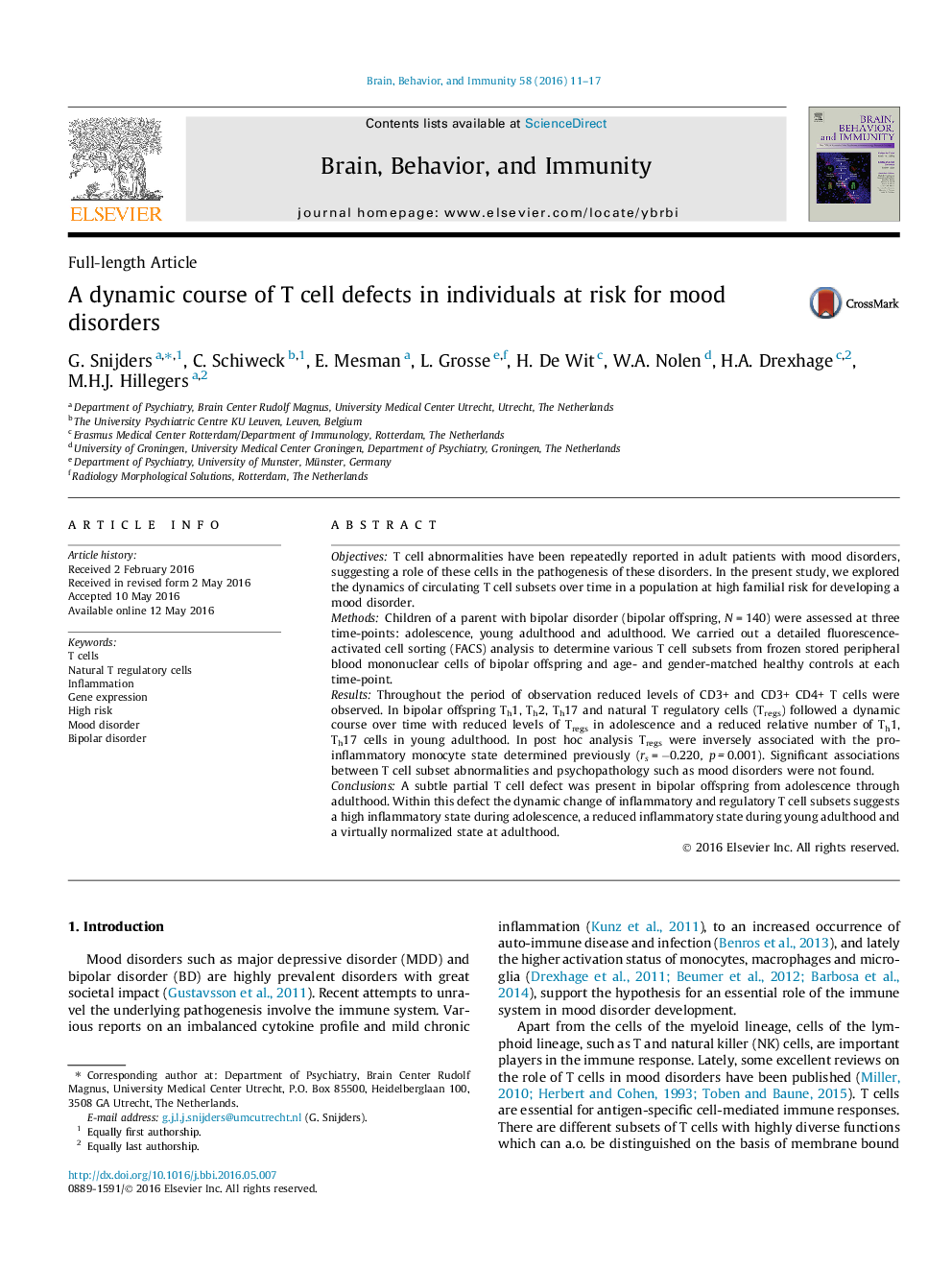| Article ID | Journal | Published Year | Pages | File Type |
|---|---|---|---|---|
| 5040959 | Brain, Behavior, and Immunity | 2016 | 7 Pages |
â¢A subtle, partial T cell deficiency has been found in bipolar offspring over time.â¢T cell subsets followed a dynamic course from adolescence into adulthood.â¢During adolescence, a high inflammatory state was detected in bipolar offspring.â¢T cell aberrancies do not directly predict mood disorder development.
ObjectivesT cell abnormalities have been repeatedly reported in adult patients with mood disorders, suggesting a role of these cells in the pathogenesis of these disorders. In the present study, we explored the dynamics of circulating T cell subsets over time in a population at high familial risk for developing a mood disorder.MethodsChildren of a parent with bipolar disorder (bipolar offspring, N = 140) were assessed at three time-points: adolescence, young adulthood and adulthood. We carried out a detailed fluorescence-activated cell sorting (FACS) analysis to determine various T cell subsets from frozen stored peripheral blood mononuclear cells of bipolar offspring and age- and gender-matched healthy controls at each time-point.ResultsThroughout the period of observation reduced levels of CD3+ and CD3+ CD4+ T cells were observed. In bipolar offspring Th1, Th2, Th17 and natural T regulatory cells (Tregs) followed a dynamic course over time with reduced levels of Tregs in adolescence and a reduced relative number of Th1, Th17 cells in young adulthood. In post hoc analysis Tregs were inversely associated with the pro-inflammatory monocyte state determined previously (rs = â0.220, p = 0.001). Significant associations between T cell subset abnormalities and psychopathology such as mood disorders were not found.ConclusionsA subtle partial T cell defect was present in bipolar offspring from adolescence through adulthood. Within this defect the dynamic change of inflammatory and regulatory T cell subsets suggests a high inflammatory state during adolescence, a reduced inflammatory state during young adulthood and a virtually normalized state at adulthood.
